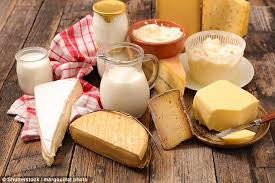
Liu Yan began his fromaging career as a foreign exchange student on the island of Corsica, a region of France. It was there that he tried homemade cheese for the first time, made by his shepherd neighbor. Specifically, he tried brocciu, a ricotta-like white cheese that is perhaps the island’s most well-known staple food. Noticing the vast contrast in taste and texture to the industrial cheeses he had tried before, Liu was hooked.
After returning to Beijing, he began experimenting with cheesemaking and shared the results with some French expats who encouraged him to continue his pursuits. This inspired Liu to become a professional, and he returned to France to study the practice.
From there, the story is one of overcoming considerable adversity. In France, Liu was met with resistance from the cheese-making school that was reluctant to accept a foreign student. After several attempts though, he managed to enroll in the school and studied for one year, however upon returning to open his own fromagerie, called Le Fromager de Pekin, in the city’s suburbs, he was again met with challenges on all fronts: It was difficult to source the proper ingredients in China, the dryness of Beijing air was far from ideal for cheese-making, and, most importantly, there was no market in China for cheese.
Dairy never took off in the Middle Kingdom as it did in the West, excluding a few outer regions of China such as Yunnan, which have their own traditional cheeses. The reason is typically attributed to mild but widespread lactose-intolerance among Chinese, thought to affect about 90 percent of the population.
But was cheese ever consumed in ancient Chinese history? The answer is a resounding maybe, and is dependant upon what qualifies as cheese. The closest thing to cheese that the ancient Chinese ate is called Old Beijing Imperial Cheese, which is made from fermented rice wine. Mark Kurlansky describes this substance in his book, Milk: A 10,000-Year History, in which he interviews a woman who tells him that Imperial Cheese is less a cheese than it is a Chinese equivalent of custard – a simple dish that can be made with little mixing, baking (or microwaving), and refrigerating.
(You can find several recipes online, but a study by the College of Food Science and Engineering of Jiangxi Agricultural University found that the optimal Imperial Cheese is made with “8 percent rice wine, 4 percent sugar, and 6 percent milk powder. The best quality of products resulted from fermentation at 45 degrees Celsius and incubation for 72 hours.”)
Imperial Cheese can still be found in Beijing today, but needless to say, the taste of such a concoction would hardly resemble the sour and salty notes favored by French palates. Might the Chinese market ever be ready for French cheese though? Incidentally, just a couple years after Liu opened his fromagerie, a study of Beijing youth concluded that young consumers could be open to certain flavors of cheese, especially sour, milky, and moist cheeses (though not the saltier numbers).
But Liu had no need for such studies. Armed with his self-assurance that Chinese culinary culture was open and adaptable, he continued to experiment and sell his cheeses, even if his only customers were French expats. His efforts were not in vain – in 2015, his Beijing Blue won the gold medal at the International Cheesemonger Competition in France.
In his interview with the Beijinger in 2010, Liu estimated that the Chinese would accept cheese faster than they had accepted coffee, which he estimates took 10 years. And now, here we are in 2020, when Beijingers are pairing wine with cheese, attending an annual Pizza Festival, and even drinking tea with cheese in it. It appears that Liu was right.
























